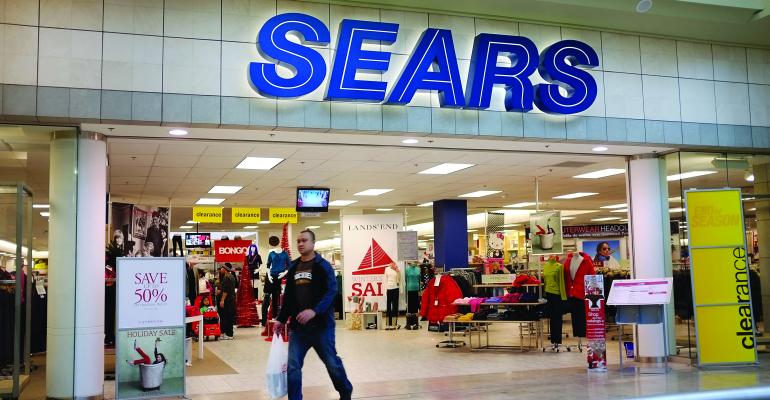(Bloomberg)—Eddie Lampert has filled in the blanks on his own $4.4 billion rescue bid for Sears, but a couple of key numbers were still missing less than a day before a key court deadline: How much did the liquidators offer?
Two bids from breakup firms have been submitted, and if either one tops Lampert, Sears Holdings Corp. could turn out to be worth more dead than alive for its creditors. Those numbers hadn’t been publicly announced as of late Thursday.
Lampert’s ESL Investments is offering to keep the bankrupt chain in business and up to 50,000 people employed. But it’s possible his plan won’t be deemed solid enough to qualify, all but assuring that the company will be shut down and sold off in pieces. The deadline for Sears to tell bidders if they’re still in the running is 4 p.m. New York time.
“The plan does preserve thousands of jobs; I’m sure that provision is in there to sugar-coat the deal and make it appealing,” said Murillo Campello, finance professor at Cornell University’s Johnson College of Business. But it’s just delaying Sears’ inevitable demise, Campello said. “If it goes through liquidation, the unsecured creditors are likely to get more than if they go with Eddie Lampert’s plan.”
Assuming more than one bidder makes the cut, an auction is scheduled for Jan. 14. After that, Sears will declare a winner and then ask the bankruptcy judge to ratify the decision. No sale to Lampert or liquidation can take place without the judge’s approval.
Lampert has been trying to shape the debate by emphasizing the potential for massive job losses. The consequences aren’t lost on some lenders, who are wary of being blamed for the collapse of a big, iconic employer the way their peers were in last year’s dismantling of Toys “R” Us Inc.
“Our going-concern bid provides the best path forward for the company, the best option to save tens of thousands of jobs and is superior for all of Sears’ stakeholders to the alternative of a complete liquidation,” according to an emailed statement from ESL.
One of the liquidating bids came from Tiger Capital Group LLC and Great American Group LLC. Another came from Gordon Brothers Retail Partners LLC and a unit of Hilco Global, according to the Wall Street Journal. A Great American representative confirmed its joint bid and declined to elaborate on the details. Sears and Gordon Brothers declined to comment, while Tiger Capital and Hilco didn’t respond to messages.
Lampert’s Terms
Pitted against them is Lampert’s last-ditch rescue proposal, a complex mix that includes loans funded by three major banks and a promise by Lampert to forgive $1.3 billion of debt that he holds in return for ownership. The complete terms were outlined in a Wednesday regulatory filing by Lampert’s ESL, which ranks as the biggest creditor and shareholder.
The filing left some doubt about how solid Lampert’s financing might be, stating that commitments received from lenders came with conditions, and “there can be no assurance that the funds referred to therein will actually be made available.”
ESL explained in its filing that the debt commitments include certain “unusual” conditions that aren’t typical for acquisitions, including a $175 million real estate secured loan that must be funded at closing. While ESL has committed to funding half the sum, it still needs lenders to agree on funding the other half.
“We intend to work expeditiously with the lenders to satisfy these conditions as soon as possible,” ESL said in the filing. “We currently expect that other lenders will provide the balance of the commitment in the near term.”
Plan B
If his plan is rejected and Sears is broken up, Lampert is interested in buying some of the pieces, including selected real estate for $1.8 billion and Sears intellectual property, such as the brand name. He’d pay for the latter by forgiving $150 million of debt.
“When enterprise value exceeds liquidation value, Chapter 11 favors redeployment of assets as part of a going concern,” said Vincent Indelicato of restructuring law firm Proskauer Rose. “That does not mean the parties will necessarily agree a going-concern bid presents the best possible outcome for the estate.”
Still, if competing bids pay the senior secured lenders about the same amount, a judge can give weight to how unsecured creditors and employees will fare, and favor a going concern offer over liquidation, said Lawrence McMichael, a bankruptcy attorney at Dilworth Paxson in Philadelphia. Sears is so big and has been around for so long that a complete liquidation is unlikely, he said.
Survival Bias
“There is a lot of psychological momentum to keeping it alive,” McMichael said. “It may be a retailer of yesteryear, but it’s still right up there. I find it hard to believe the lawyers in that case can’t find a way to keep that brand alive.”
This might forestall total liquidation for a few years at most, said Noel Hebert, a credit analyst who covers Sears for Bloomberg Intelligence.
“Even if there’s a surviving entity here, you’re in Chapter 22 within two years, maybe three,” said Hebert, referring to companies that wind up returning to Chapter 11 bankruptcy. “Their model is too far gone at this point to resuscitate.”
To contact the reporters on this story: Katherine Doherty in New York at [email protected]; Josh Saul in New York at [email protected] ;Steven Church in Wilmington, Delaware at [email protected] To contact the editors responsible for this story: Rick Green at [email protected] Shannon D. Harrington
COPYRIGHT
© 2019 Bloomberg L.P

